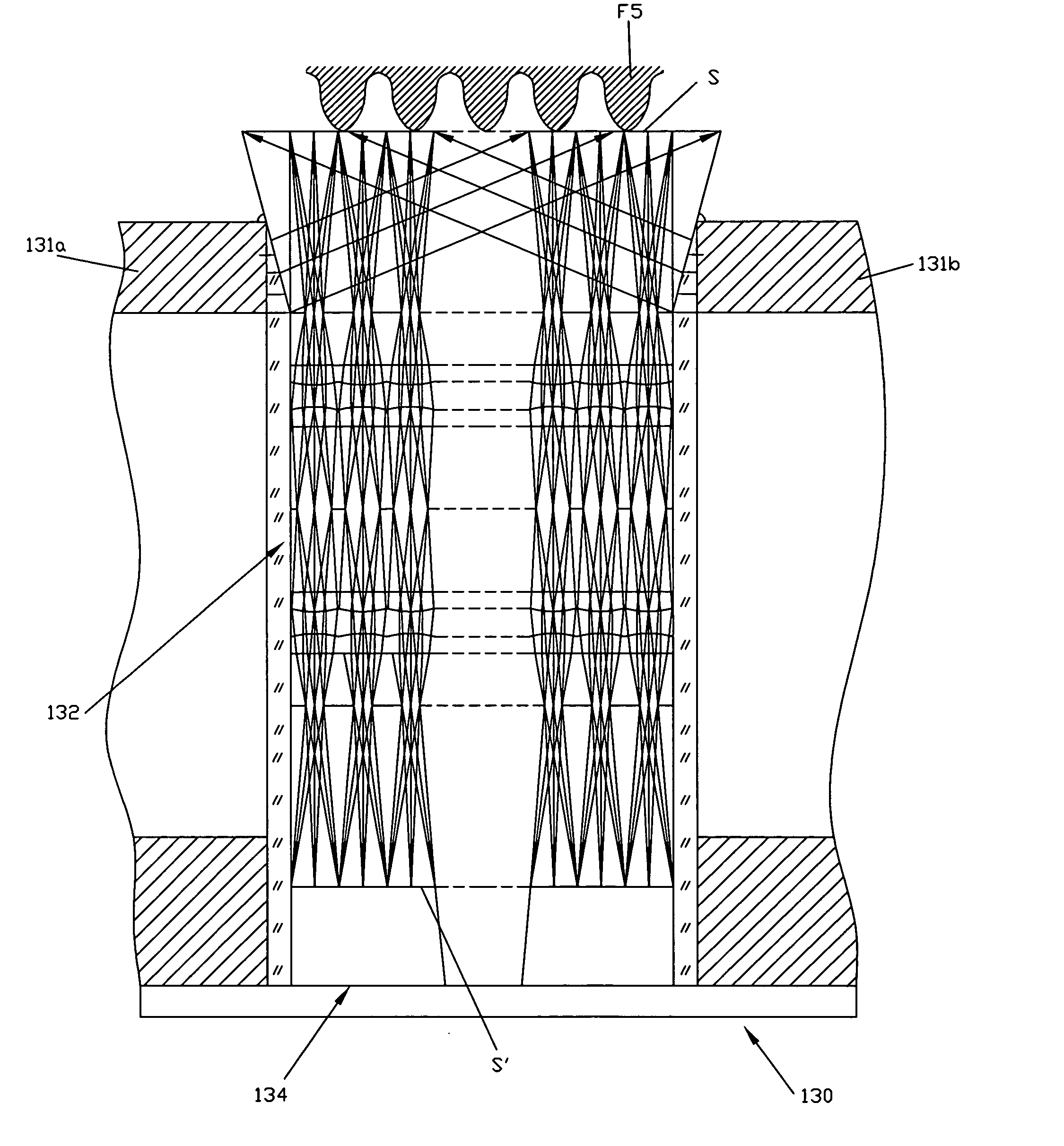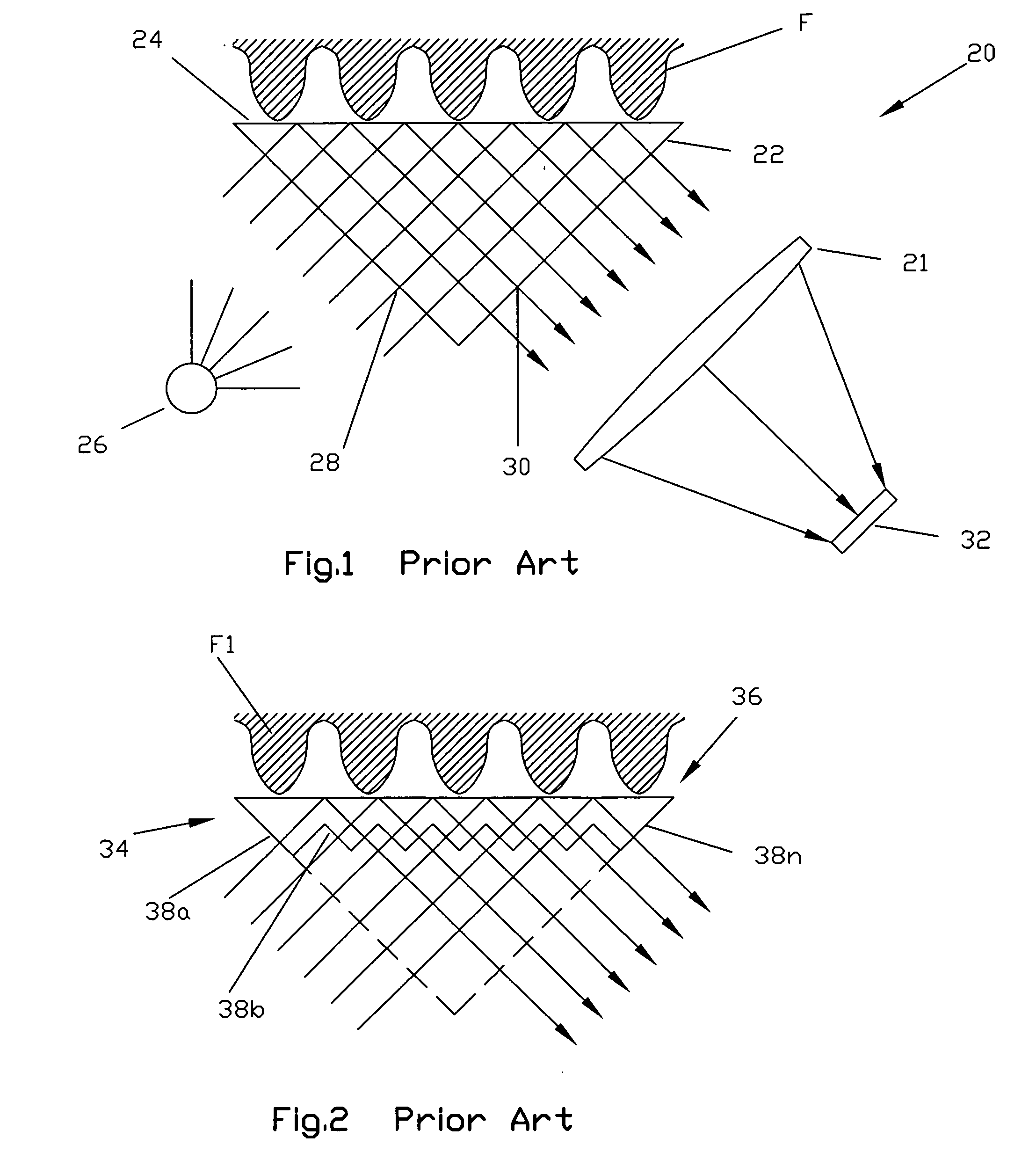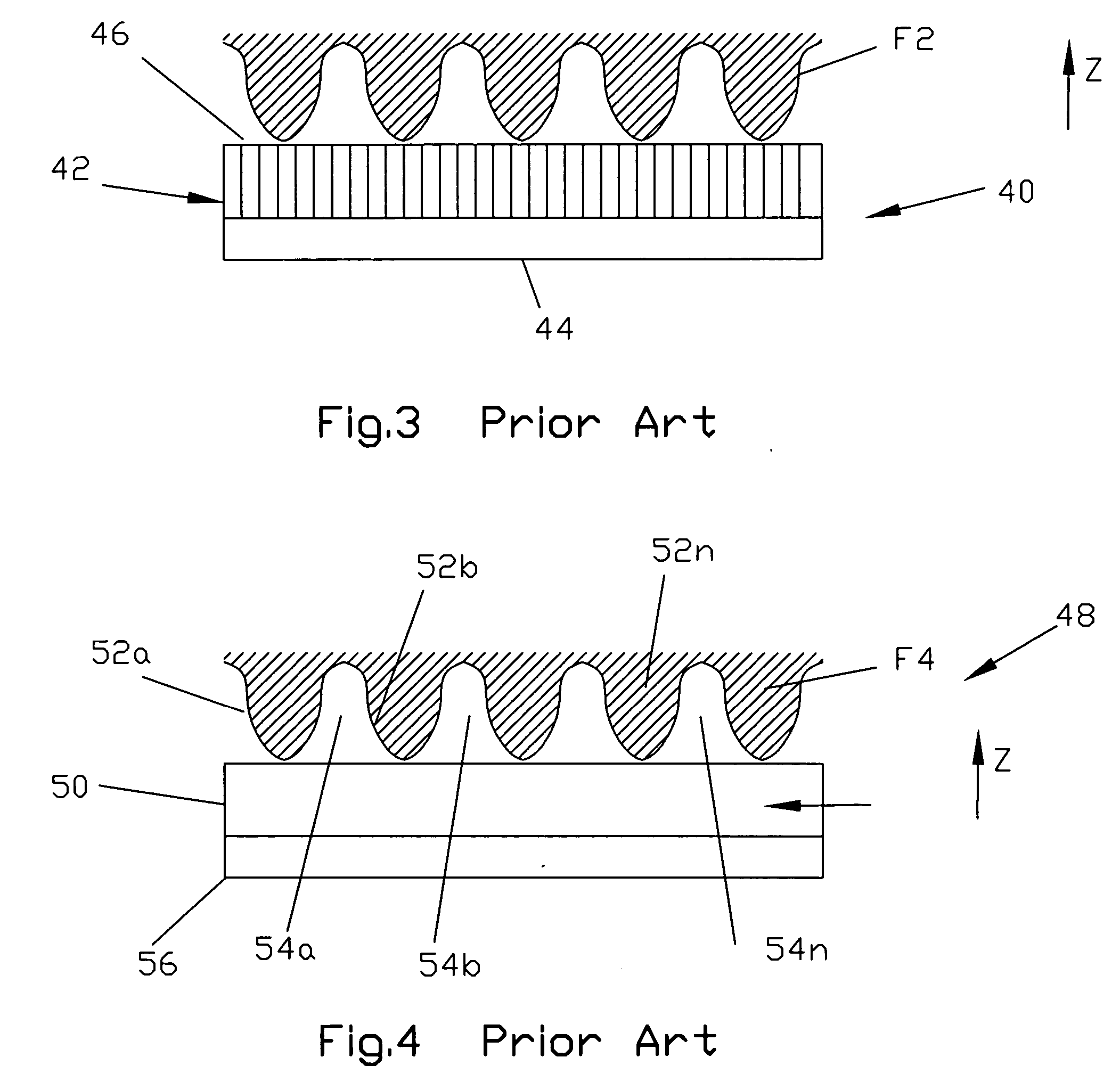Contact-type monolithic image sensor
a monolithic optical image and contact-type technology, applied in the field of monolithic optical image sensors, can solve the problems of increasing the number of problems that remain unsolved, reducing the resolution capacity of conventional bar-code readers, and being relatively expensive devices. the effect of thickness reduction
- Summary
- Abstract
- Description
- Claims
- Application Information
AI Technical Summary
Benefits of technology
Problems solved by technology
Method used
Image
Examples
Embodiment Construction
—PREFERRED EMBODIMENTS—FIGS. 5-16
General Features of Two Embodiments
[0135] In general, the sensor of the invention can be realized in two different embodiments. Although the principle of the invention is common for both embodiments, each embodiment can be realized in several slightly different modifications. In one preferred embodiment of a sensor 120a, a schematic sectional view of which is shown in FIG. 5, a light source (sources) 122a is (are) located on the lateral side (sides) of the optical layer for illuminating the inner top surface of the glass plate which is in contact with the object. In the second preferred embodiment of a sensor 120b, which is schematically shown in cross section in FIG. 6, an interlayer light source 122b is made in the form of a single or a multiple light-emitting diode source embedded into the laminated optical layer. The subsequent description of parts and elements that are identical in both sensors 120a and 120b (FIG. 5 and FIG. 6) will be related...
PUM
 Login to View More
Login to View More Abstract
Description
Claims
Application Information
 Login to View More
Login to View More - R&D
- Intellectual Property
- Life Sciences
- Materials
- Tech Scout
- Unparalleled Data Quality
- Higher Quality Content
- 60% Fewer Hallucinations
Browse by: Latest US Patents, China's latest patents, Technical Efficacy Thesaurus, Application Domain, Technology Topic, Popular Technical Reports.
© 2025 PatSnap. All rights reserved.Legal|Privacy policy|Modern Slavery Act Transparency Statement|Sitemap|About US| Contact US: help@patsnap.com



